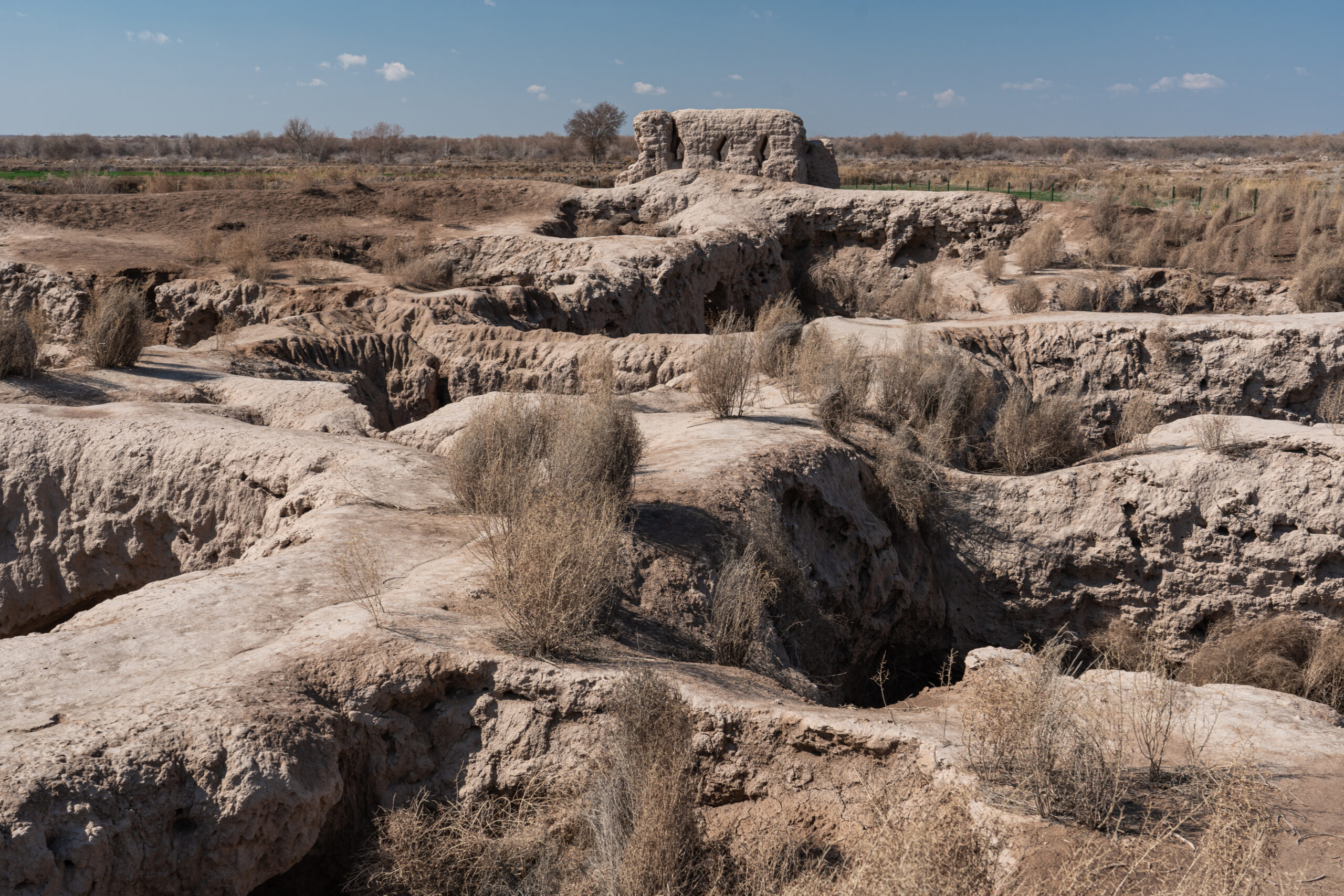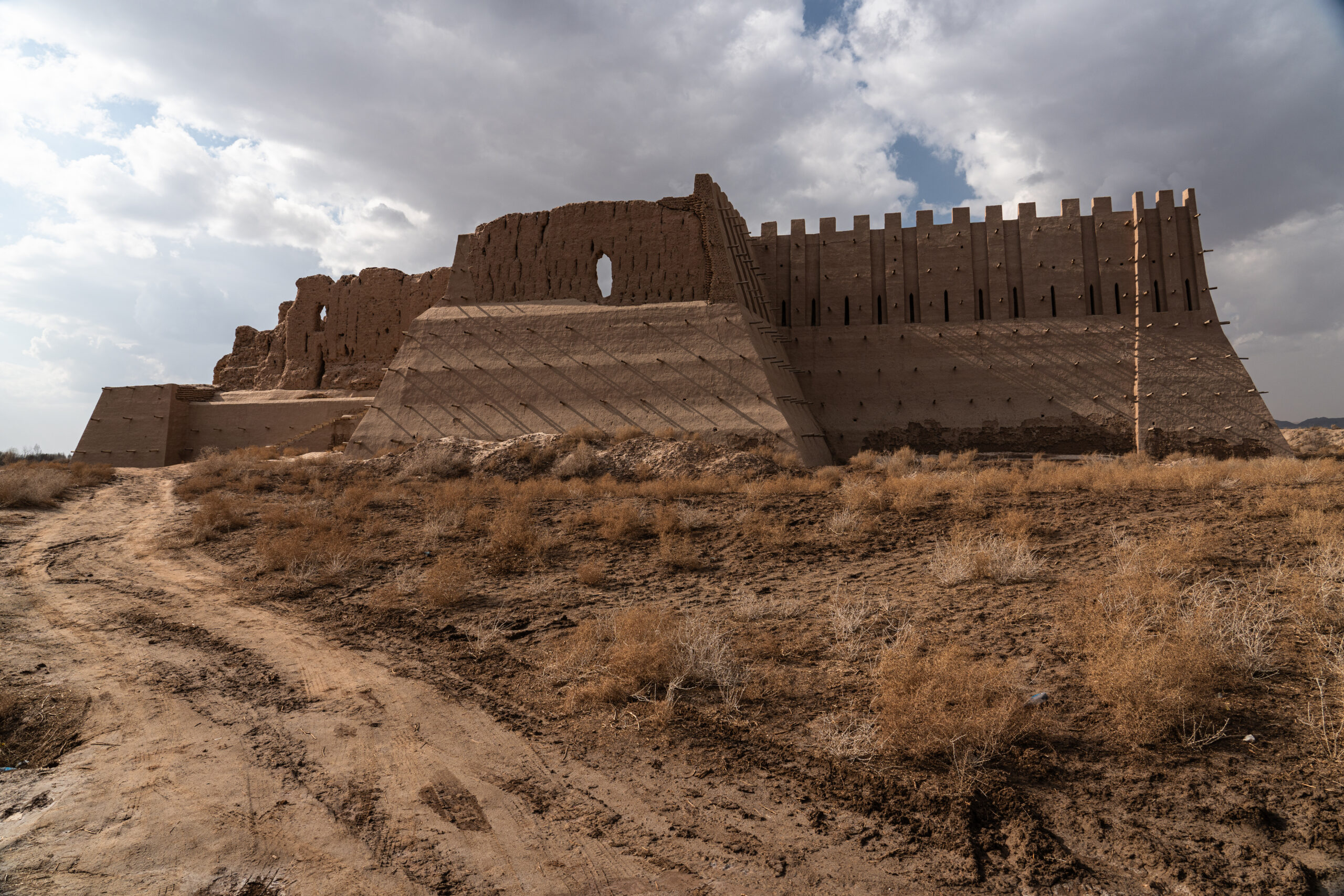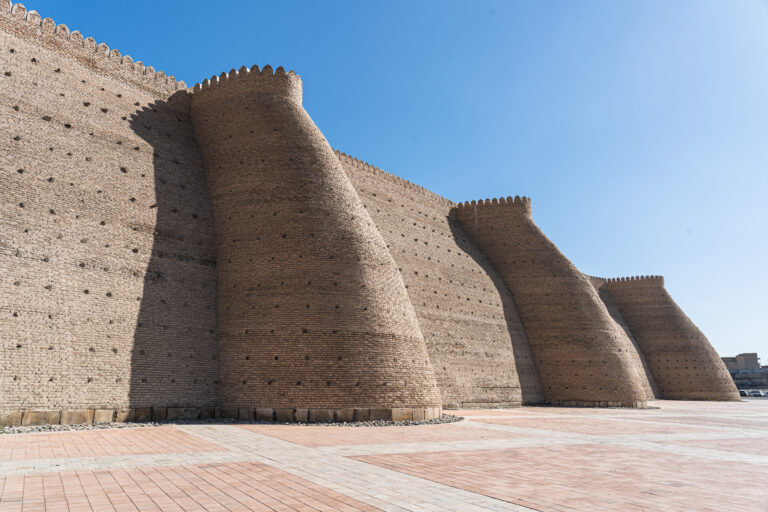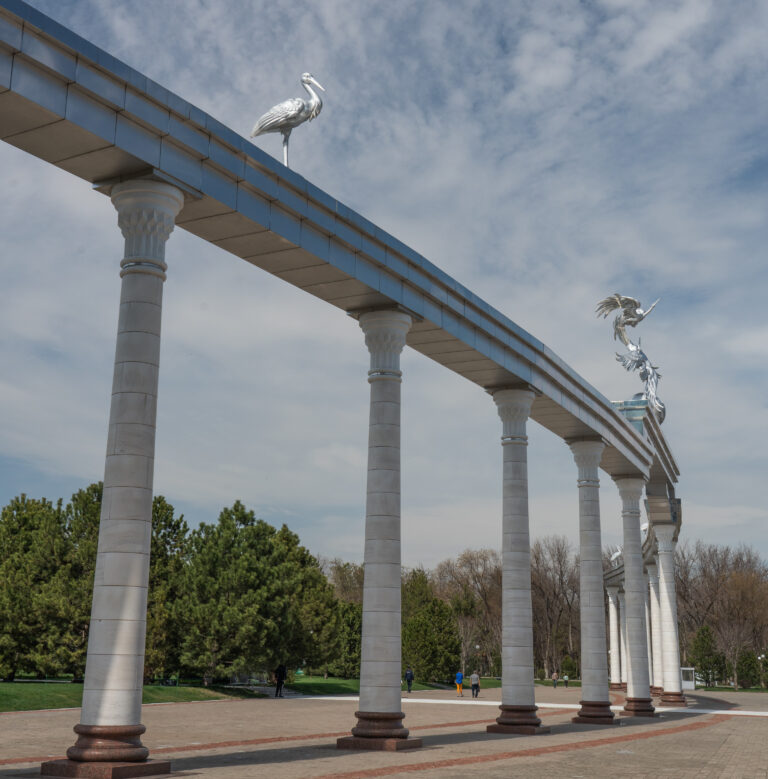Ancient Khorezm Fortresses of Uzbekistan
The Republic of Karakalpakstan is an autonomous desert region in the far reaches of Uzbekistan. It is also home to the magical ancient Khorezm fortresses of Uzbekistan. The capital city of Karakalpakstan, Nukus, is well known for its art museum with important collections of contemporary and avant-garde art from Russia, Uzbekistan and Karakalpakstan.
The visit to the Khorezm fortresses is easy to do as a day trip from Khiva and was one of the highlights of my visit to Uzbekistan. While many of the ancient remains of the country have been painstakingly reconstructed, the relative state of disrepair of the ruins of these principal fortresses gives them a romantic air and leaves you to imagine the grandeur that once existed thousands of years ago.
Two thousand five hundred years ago, Khorezm (like Sogdiana) was a province of the Achaemenid Persian Empire. Today, it is part of Uzbekistan. In the 4th century BC, Khorezm (Chorasmia) gained its independence from the Persians. The golden period of independence is believed to have lasted until the 1st century AD. Like much of the region the following centuries saw a catalogue of invading tribes coming from both east and west.
Ellik Qala
To give a bit of freedom, my guesthouse arranged a taxi for me for the day. Just over an hour from Khiva, passing through Urgench, is the modern gateway that marks the entrance to Ellik Qala (which in Uzbek means fifty fortresses). There are a few small tours that head out to this remote region, but even the main fortresses (such as Ayaz Qala and Toprak Qala) have few visitors.
Most of the fortresses were founded between 2500 and 2000 years ago. Obviously, the fortresses were developed and rebuilt over the coming centuries. However, the wave of invaders eventually left the fortresses in ruins. Finally, those that had survived or had been rebuilt were devastated with the 13th century Mongol invasion led by Genghis Khan.

Qo’y Qirilgan Qala
Some websites suggest that reaching Qo’y Qirilgan Qala (fortress of the dead sheep) needs a four-wheel drive vehicle. Recent road development makes it possible to drive directly to the site with just the last section being on gravel road. A surrounding pathway encourages you to keep off what little remains of this unusual circular fortress. There was nobody else at the site.



Ayaz Qala
Ayaz Qala is spread over three sites. The most striking are the fortress on top of the lower mount with the citadel sitting above. The ruins are impressive and thanks to sympathetic preservation, as opposed to reconstruction, Ayaz Qala feels very authentic.







Toprak Qala
The outer walls of Toprak Qala appear to be little more than raised mounds of mud. Going towards the centre and far side of the site, you can see the full enormity of Toprak Qala. It would have been considerably larger than the Itchen Qala, The old walled city Of Khiva, is today.



Kyzyl Qala
Kyzyl Qala is only a couple kilometres from Topraq Kala. It is in the process of being reconstructed and stands as an example of what the fortress might have looked like when it was built between the 1st and 2nd century AD.


There are many more fortresses to visit in Karakalpakstan. It is certainly a highlight of any visit to this area of the World.





